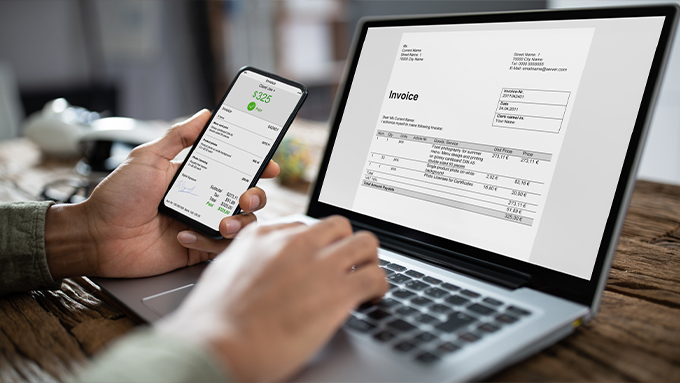
An invoice or sales invoice is an itemized and detailed document sent by a business vendor to a customer or client. The invoice is an official record of the items or services provided, the amount owed, and how to pay.
Invoices are a crucial tool for any business.
An invoice created through a reliable invoice generator contains the details required to approve, process, and pay your vendor as quickly and efficiently as possible. Here are the key components that every invoice should include to ensure you're invoicing customers correctly:

For both the vendor and client (or affiliated billing department), ensure the following information is correctly displayed:
The information shows who sent the payment and who received the payment. Accounting departments on both sides will find this information relevant and necessary.

An invoice number is a unique reference number created by a vendor that identifies the invoice. At the start of the tax year, vendors provide a unique and sequential invoice number for each client or customer. Display the invoice number at the top of the document where it is easily visible. By including an invoice number on each invoice, the invoice process stays organized and efficient.
At the start of the tax year, vendors provide a unique and sequential invoice number for each client or customer.

The key is in the details here. In this section, a vendor specifically outlines each product or service provided and at the agreed price. Each product or service description is an individual line item. For each line item, include the following:
After adding the line items and totals, calculate the total amount due. Typically, this is displayed clearly at the top of the invoice for easy access.

Payment terms are unique to each vendor and client. So, it's important to customize these terms when possible. These payment expectations are detailed guidelines that articulate the necessary steps a buyer needs to fulfill a transaction. By clearly specifying the agreed-upon amount, a payment deadline, and the payment options, a buyer is more likely to pay the invoice on time.
Payment terms are unique to each vendor and client.
One of the most common invoicing mistakes is displaying unclear payment terms and conditions. For example, a client may not know accounting terms like "Net 30 Days". Instead, say "due within 30 days" or give an exact due date to avoid any misunderstanding.
Additionally, payment terms should include late payment policies, which include late payment fees. Furthermore, it is crucial to highlight the accepted or preferred method(s) of payment. Giving more payment options will also increase the chances of getting paid on time.

Invoices are a crucial tool for any business. By creating accurate and detailed invoices, a business is less likely to run into any legal issues and is more likely to be paid on time.
If you use a simple invoice generator like Invoicer, you don't have to worry about missing these details. All you have to do is enter the information into our in-line editor to send a perfectly crafted invoice in minutes.
Try Invoicer 100% FREE for 14-days and see how easy invoicing can be.